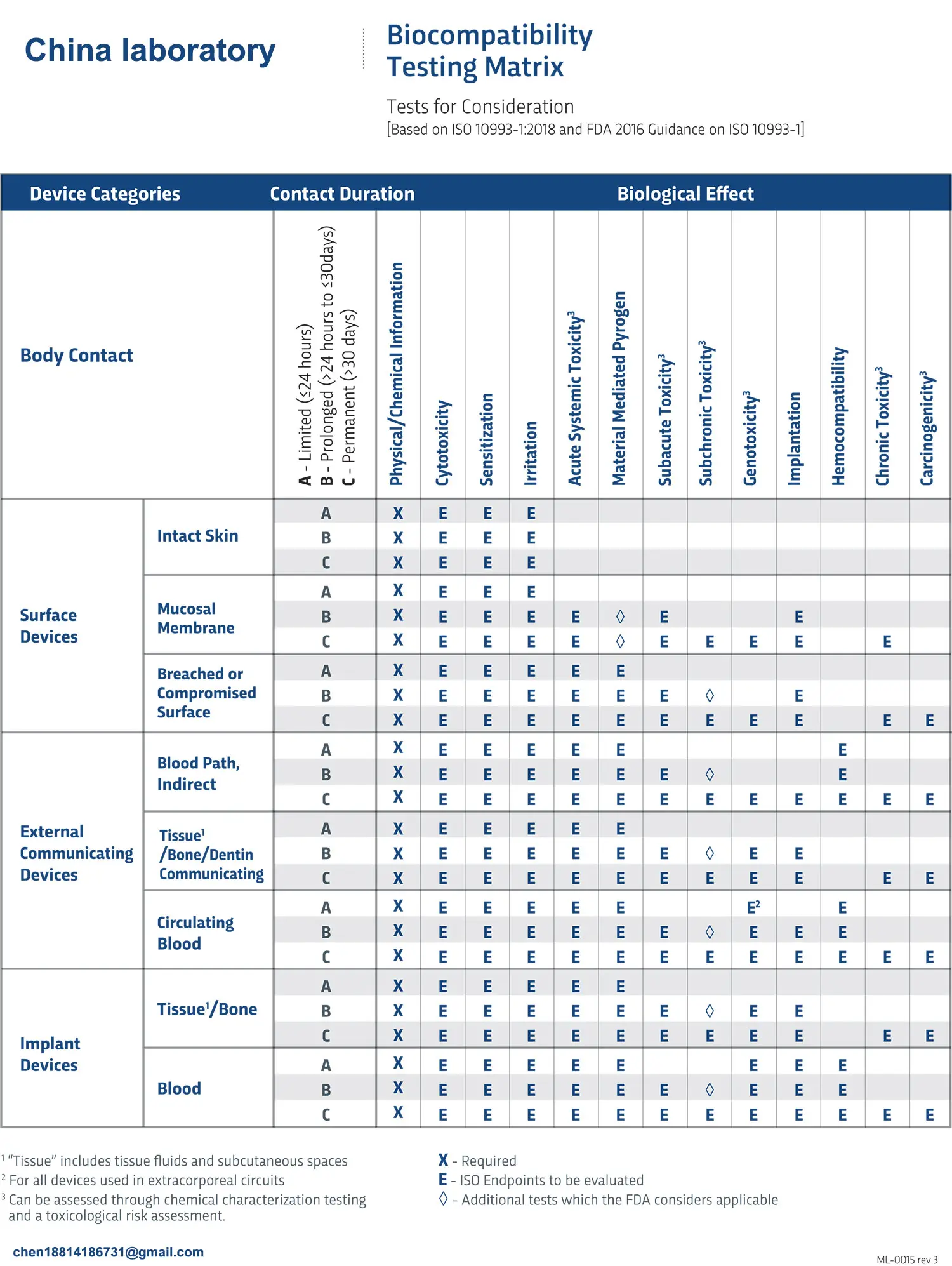
What Biocompatibility Testing is Needed for Retractors?
what biocompatibility testing is needed for retractors? Three common biocompatibility tests are necessary, namely cytotoxicity, skin irritation, and skin sensitization testing.

JJRLAB medical device biocompatibility testing services include:
| <UL style="box-sizing: border-box; margin-top: 0.5em; margin-bottom: 0.5em; padding: 0px 0px 0px 40px;" class=" list-paddingleft-2"> Incontinence Treatment Absorbents Adhesives Blood collection and storage equipment Bone void fillers Central nervous system implants Combination Products Contact lenses Dental Implants Devices containing antimicrobial agents Equipment raw materials Intraocular lenses Orthopedic Implants Surgical sutures Vascular catheter Wound Drainage Devices Hemodialysis Disposables |
|
cytotoxicity test (3 weeks)
Cytotoxicity test (MTT method) ( iso 10993-5)
Cytotoxicity test (agar method) (ISO 10993-5 / USP 87)
Cytotoxicity test (membrane filter method) (ISO 10993-5)
Cytotoxicity test (direct contact method) (ISO 10993-5 / USP 87)
Cytotoxicity Test (Elution Method) (USP 87)
Skin irritation and sensitization testing
Sensitization test (maximum dose method/patch method) (iso 10993-10) (6 - 8 weeks)
Skin irritation test (ISO 10993-10) (3 weeks)
Intradermal irritation test (ISO 10993-10 / USP 88) (3 weeks)
Oral irritation test (with histopathology reading) (ISO 10993-10) (8 - 10 weeks)
Vaginal irritation test (with histopathology reading) (ISO 10993-10) (8 - 10 weeks)
Penile stimulation test (with histopathology reading) ( ISO 10993-10) (8 - 10 weeks)
Rectal irritation test (with histopathology reading) (ISO 10993-10) (3 months)
Eye irritation test (ISO 10993-10) (3 - 4 weeks)
Systemic toxicity test
Acute systemic toxicity test (ISO 10993-11 / USP 88) (3 weeks)
Subacute systemic toxicity test (14 / 28 days) (ISO 10993-11) (6 weeks / 8 weeks)
Sub-/ Chronic Systemic Toxicity Test (90 / 180 days) (ISO 10993-11) (5 months / 8 months)
Pyrogen test (ISO 10993-11) (3 weeks)
Post-implantation local reaction test (starting from 4 weeks)
Subcutaneous implant test (iso 10993-6)
Muscle implant testing (ISO 10993-6)
Bone Implant Testing (ISO 10993-6)
Blood compatibility test (2 weeks)
Hemolysis test ( ISO 10993-4/GB)
Hemolysis Test (ASTM F756)
Coagulation test (ISO 10993-4 / GB)
Platelet count test
Complement test (ISO 10993-4 / GB)
Thrombosis test (in vivo, in vitro) (ISO 10993-4 / GB)
Genotoxicity/ Genetic Toxicity Testing (ISO 10993-3)
Bacterial resilience test (8 weeks)
Mouse lymphoma test (10 weeks)
Chromosome aberration test (10 weeks)
Micronucleus test (mice) (10 weeks)
Email:hello@jjrlab.com
Write your message here and send it to us
 WEEE Registration for Waste Electrical &Electr
WEEE Registration for Waste Electrical &Electr
 MSDS Chemical Safety Testing
MSDS Chemical Safety Testing
 What Are the Differences Between UK REACH and EU R
What Are the Differences Between UK REACH and EU R
 E-Cigarette GB 41700 Compliance Testing
E-Cigarette GB 41700 Compliance Testing
 What Are the Testing Items of California Propositi
What Are the Testing Items of California Propositi
 E-Cigarette EU TPD Testing
E-Cigarette EU TPD Testing
 Testing Certification for E-cigarettes Exported to
Testing Certification for E-cigarettes Exported to
 What is Amazon US CPC Certification?
What is Amazon US CPC Certification?
Leave us a message
24-hour online customer service at any time to respond, so that you worry!




